Imagine you are deploying your app without setting up a single server.
No backend infrastructure to manage. No worries about scaling under heavy traffic. Just focus on writing code and let the cloud do the rest.
It is possible because of serverless computing.
So, what is serverless computing exactly?
It is a cloud-based model where you build and run applications without managing the basic infrastructure.
Instead of maintaining servers, you just write functions that execute like processing an image upload or handling a user login.
The cloud provider automatically handles everything from scaling to server management.
Tech giants like AWS (with Lambda ), Google Cloud (with Cloud Functions), and Microsoft Azure (with Azure Functions) are investing in serverless platforms.
They are making it easier than ever for businesses to adopt this modern approach.
Whether you are building a startup app or scaling enterprise software, serverless provides better speed, flexibility, and cost-efficiency.
The market size of Serverless computing is expected to reach $54.03 billion by 2030.
That’s why serverless computing is quickly becoming the future of app development.
If you are trying to learn about the best serverless platforms for startups and what is serverless computing then you will get all the answers here.
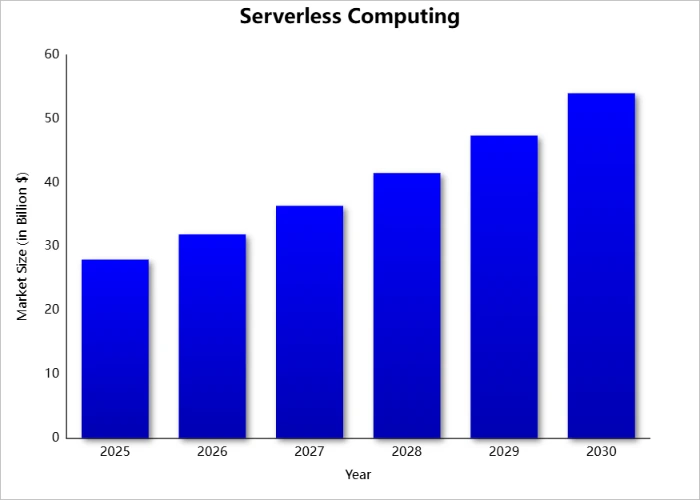
Source: Grand View Research
What is Serverless Computing? (Explained Simply)
Serverless computing doesn’t mean there are no servers. It means you don’t have to manage them.
In traditional development, you need to set up, maintain, and scale servers manually to run your app.
With serverless computing, cloud providers like AWS, Google Cloud, and Azure do all of that for you.
You just write your code, and they take care of everything behind the scenes.
This is where Function as a Service (FaaS) comes in.
Instead of launching an entire application, you launch small, self-contained functions that run only when triggered like when a user clicks a button or submits a form.
These functions scale automatically based on demand, and you only pay for the time your code is running.
So, how serverless computing works is simple:
- You write and deploy your function.
- A user triggers it (like visiting your app).
- The cloud provider runs the function instantly, handles the scaling, and then shuts it down when it’s done.
Serverless computing is perfect for developers who want to move faster, reduce costs, and build modern applications without the usual infrastructure headaches.
Serverless vs Traditional Architecture: What’s the Difference?
When building an application, one of the biggest decisions is choosing the right backend setup.
Should you go with a traditional architecture or use the modern serverless architecture?
The comparison between serverless vs traditional architecture in maintenance, cost, scalability, and speed allows us to see why developers are switching to serverless.
Serverless vs Traditional Architecture
| Feature | Traditional Architecture | Serverless Architecture |
|---|---|---|
| Server Management | You manage and maintain servers manually. | No server management is required as it is handled by the cloud provider. |
| Scalability | Manual scaling based on traffic predictions. | Automatically scales with demand. |
| Cost | Pay for server uptime even when idle. | Pay only for actual usage (when functions run). |
| Deployment Speed | Slower because of infrastructure setup. | Faster & deploy functions directly without full app redeployment. |
| Maintenance | Regular server updates, patches, & monitoring. | Minimal maintenance and focus only on code. |
| Resource Usage | Often overprovisioned (paying for unused resources). | Highly efficient & runs only when triggered. |
| Flexibility | Fixed setup that is harder to change quickly. | More flexible & ideal for agile and event-driven development. |
Serverless architecture allows developers to build and launch applications faster, with lower costs and zero infrastructure headaches.
It is a perfect choice for startups, agile teams, and businesses that want to focus on innovation, not server management.
If you’re still confused about serverless vs traditional architecture, ask yourself: Do I want to maintain servers, or just build a great app?
What are the Top Benefits of Serverless Computing for Your App?
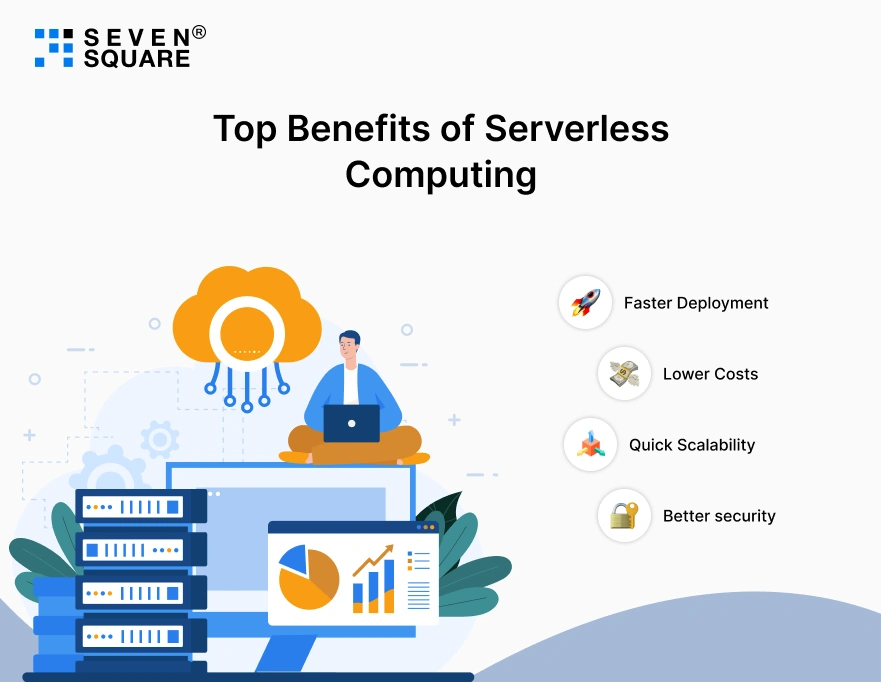
Why are more developers and businesses choosing serverless architecture over traditional methods?
Because the benefits of serverless computing are amazing especially if you’re looking to build fast, scale smart, and keep costs under control.
Here are the top advantages of going serverless for your next app:
1. Faster Deployment
- No more setting up servers or configuring backend infrastructure.
- With serverless computing, you can deploy your code in minutes.
- This means faster launch times and quicker iterations which is perfect for agile teams and startups.
2. Lower Costs
- Traditional servers run 24/7 even when your app isn’t being used.
- Serverless only runs your code when needed, so you only pay for what you use.
- No more wasted resources = big cost savings.
3. Quick Scalability
- Expecting an increase in traffic? With serverless architecture, you don’t need to worry.
- Your app automatically scales up or down based on demand without any manual work.
- Whether it’s 10 users or 10,000, performance stays smooth.
4. Better Security
- Major cloud providers like AWS, Google Cloud, and Azure handle the security patches and infrastructure updates for you.
- This minimizes vulnerabilities and lets you focus on keeping your app secure at the code level.
From faster development cycles to real cost savings, the benefits of serverless computing make it the best choice for modern app development.
When to Choose Serverless: Use Cases & Real-World Examples?
Every app doesn’t need a traditional server setup. Many modern projects run better and cheaper on serverless.
Let’s explore where serverless computing runs at its full potential.
1. Web & Mobile Applications
- One of the top serverless computing use cases is building scalable web and mobile apps.
- Whether you are launching a startup MVP or an enterprise-grade app, serverless allows you to roll out fast & manage features independently.
- Example: A food delivery app using serverless functions to handle user logins, order placement, and payment processing without worrying about servers.
2. APIs & Microservices
- Serverless is a perfect fit for lightweight APIs and microservices.
- You can break down your app into small, independent functions each responsible for a specific task.
- This makes your app easier to maintain and update.
- Example: A travel booking website using serverless APIs for flights, hotels, and customer support modules all built and deployed separately.
3. Real-Time File & Data Processing
- Need to process images, videos, or files on the go?
- Serverless functions can trigger automatically when new content is uploaded to make them ready for real-time tasks.
- Example: A social media app using serverless functions to compress images & transcribe videos as soon as a user uploads them.
4. IoT (Internet of Things)
- Serverless computing for mobile app development extends to IoT too.
- With connected devices generating continuous data, serverless helps handle and process events in real time without the need for constant backend resources.
- Example: A smart home app where functions are triggered based on motion detection, temperature changes, & voice commands.
From mobile apps to real-time file handling, these serverless computing examples show how flexible and powerful this approach can be.
If you’re looking for speed, scalability, and simplicity then serverless is the way to go.
What are the Serverless Computing Platforms You Should Know?
If you are ready to go serverless, the next step is choosing the right platform.
The biggest names in cloud computing offer powerful tools to help you build, deploy, and scale your serverless apps easily.
Here are three of the most popular serverless computing platforms trusted by developers worldwide:
1. AWS Lambda

- Serverless computing in AWS Lambda is one of the most widely used solutions.
- With Lambda, you can run code for virtually any type of application & backend service without managing servers.
- It automatically scales and charges you only for the compute time you use.
- Best for: Web apps, Automation, Data processing, and APIs.
- Languages Supported: Node.js, Python, Java, Go, Ruby, etc.
2. Google Cloud Functions
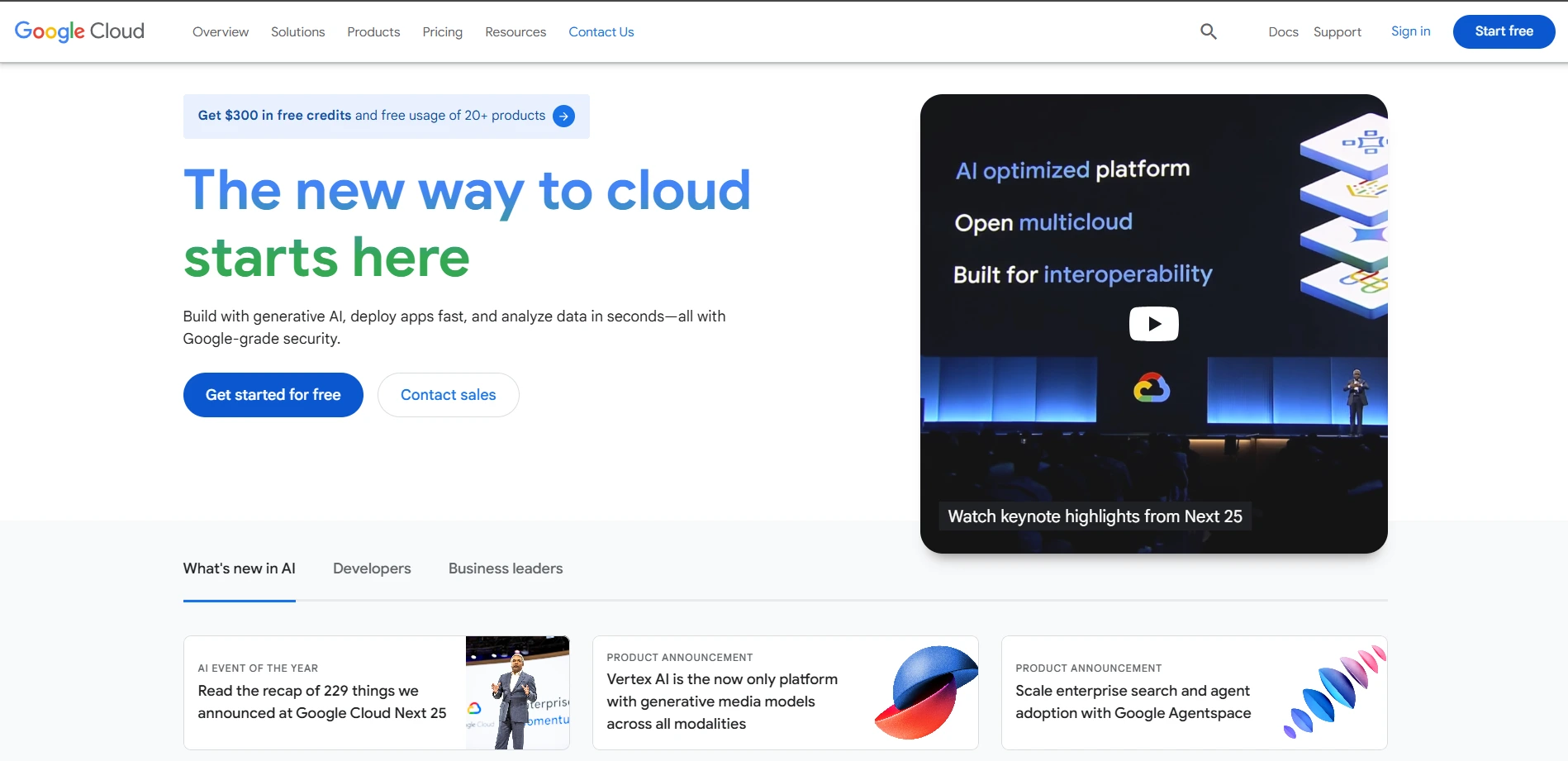
- Google Cloud Functions makes it easy to run your code in response to events like HTTP requests & cloud storage uploads.
- It’s tightly integrated with Google Cloud services to make it a great choice for apps already using Google’s ecosystem.
- Best for: Real-time apps, Data pipelines, & Chatbots.
- Languages Supported: JavaScript (Node.js), Python, and Go.
3. Microsoft Azure Functions
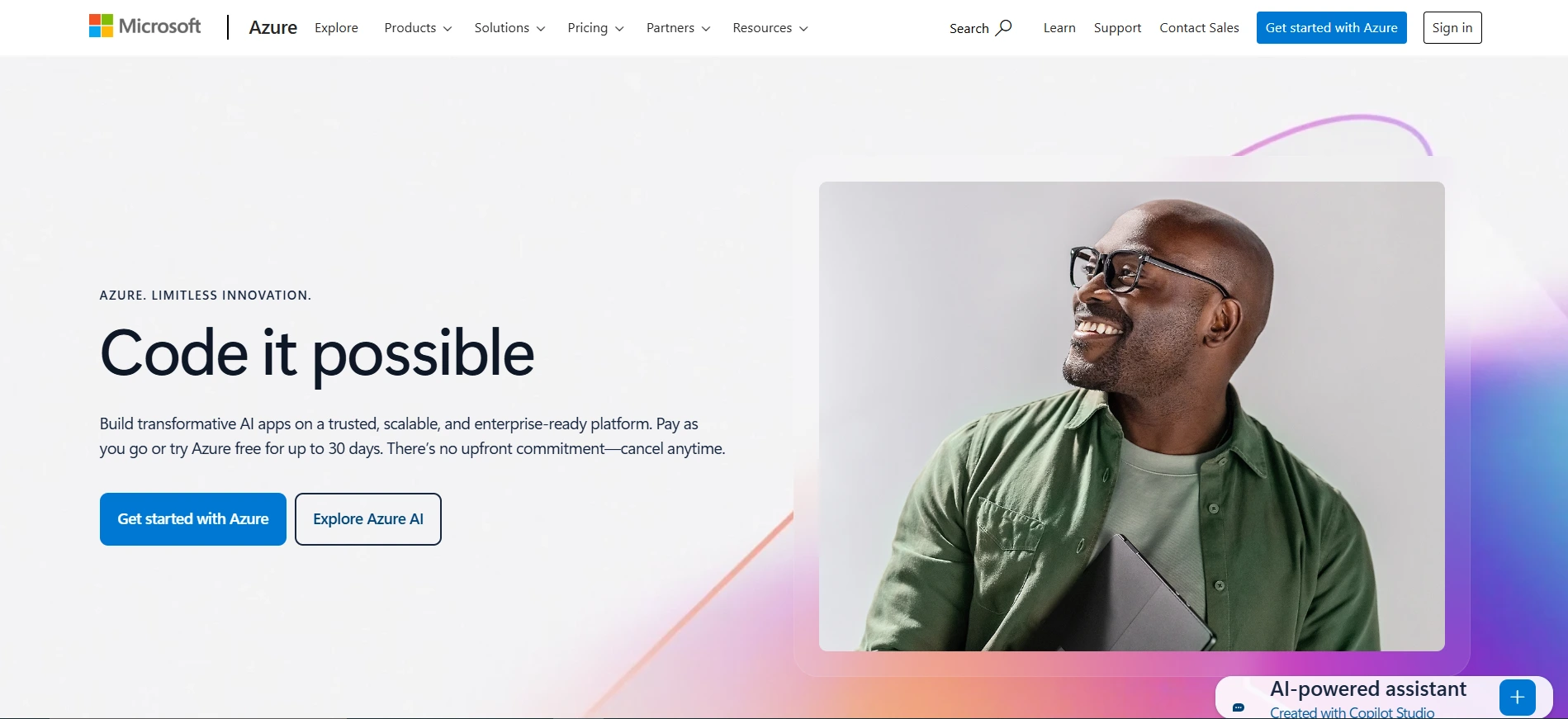
- Azure Functions is Microsoft’s take on serverless.
- It supports both simple and complex workflows and offers deep integration with Azure tools, DevOps, and enterprise solutions.
- Best for: Enterprise-grade apps, Background tasks, and Microservices.
- Languages Supported: C#, Java, JavaScript, PowerShell, & Python.
Each of these serverless computing platforms offers flexibility, reliability, and ease of use.
Whether you are developing a mobile app, automating tasks, or scaling a global product there is a serverless solution that is perfect for you.
How We Can Help You to Go Serverless?
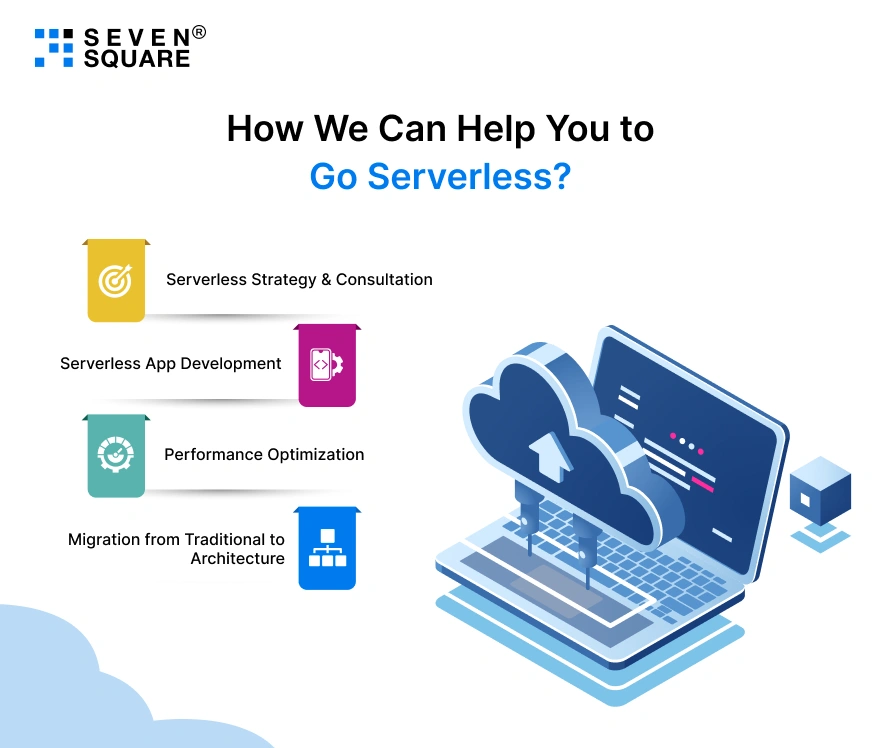
We specialize in helping startups, scale-ups, and enterprises with the power of serverless computing.
Learn more about the difference between AWS vs Azure.
Whether you are building from scratch or migrating an existing app, our expert team knows how to make your product scalable, cost-efficient, and future-ready.
- Serverless Strategy & Consultation: We start by understanding your business needs and recommending the right serverless architecture. From feature planning to platform selection, we help you every step of the way.
- Serverless App Development (AWS, GCP, Azure): Our developers build robust, cloud-native applications using AWS Lambda, Google Cloud Functions, and Microsoft Azure Functions. We ensure your app runs smoothly, scales effortlessly, and performs at its peak.
- Performance Optimization: We don’t just build apps, we make them faster, leaner, and more efficient. With performance audits and real-time optimization, your serverless app stays best.
- Migration from Traditional to Serverless: Already have an app? We help you migrate from traditional architecture to serverless quickly and without downtime. Save on infrastructure costs and have modern scalability.
Want to Integrate Serverless Architecture in Your App? Contact Us Now!
Is Serverless Right for You? What You Need To Consider?
Serverless computing means no servers to manage, auto-scaling, and pay-as-you-go pricing.
But is it the right fit for your app? Let’s see some of the most important factors to consider before going for serverless computing.
1. App Complexity
- If your app is small with components like APIs, background tasks, & event triggers then serverless computing for microservices architecture is a perfect match.
- For large monolithic applications, migrating to serverless may require breaking down your codebase first.
2. Budget & Cost Efficiency
- Serverless works on a pay-per-use model so you only pay when your code runs.
- This means big savings compared to traditional servers that run 24/7.
- For apps with very high & constant usage costs can increase.
- A detailed serverless computing cost comparison can help you decide if it’s more economical than managing your servers.
3. Performance Requirements
- Serverless platforms are fast but not always instant.
- Some functions can experience a “cold start” delay if they haven’t been used in a while.
- For apps needing ultra-low latency like gaming & trading platforms, this might be a concern.
- For most use cases performance is more than sufficient.
FAQs
- In serverless computing, your code runs in response to events like HTTP requests, database updates, & file uploads.
- These events trigger small pieces of code (called functions), which are executed by cloud platforms such as AWS Lambda, Google Cloud Functions, & Azure Functions.
- No, there are still servers but you don’t need to manage & interact with them directly.
- The cloud provider automatically provisions and scales them in the background.
- Serverless computing for mobile app development is a great choice.
- It allows you to build scalable and event-driven backends without heavy infrastructure.
- It’s ideal for push notifications, user authentication, real-time updates, and more.
- Yes, you can.
- But you have to break your monolithic app into smaller components (microservices).
- Our team at Seven Square Tech can help you with a smooth migration strategy for your app.